“Global Carbon Accounting Software Market to reach a market value of USD 74.4 Billion by 2031 growing at a CAGR of 21.8%”
The Global Carbon Accounting Software Market size is expected to reach $74.4 billion by 2031, rising at a market growth of 21.8% CAGR during the forecast period.
The European Green Deal is an extensive plan to make Europe the first climate-neutral region by 2050. This ambitious goal requires accurate tracking and reducing carbon emissions across all sectors. This software is essential for businesses to comply with these regulations and achieve sustainability targets. Consequently, the European region would acquire nearly 30% of the total market share by 2031.
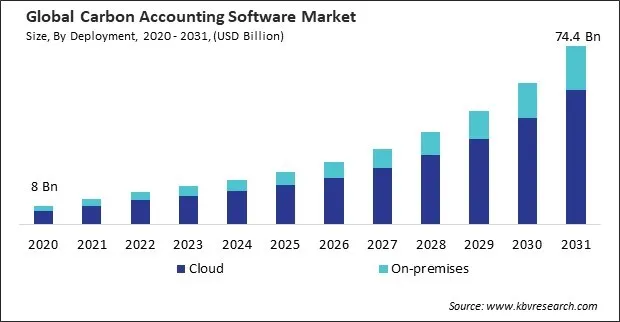
The major strategies followed by the market participants are Partnerships as the key developmental strategy to keep pace with the changing demands of end users. For instance, in July, 2024, Persefoni AI Inc. partnered with AuditBoard, a compliance and risk management solutions provider, to integrate carbon accounting into ESG management. This collaboration combines Persefoni’s carbon accounting expertise with AuditBoard’s connected risk platform to provide a unified, audit-ready ESG data solution. Moreover, in June, 2024, Persefoni AI Inc. signed a partnership with First Street, a climate risk data solutions provider, to integrate advanced physical climate risk data into Persefoni’s platform, enhancing enterprises’ ability to report on physical risk for regulatory compliance.
Based on the Analysis presented in the KBV Cardinal matrix; Microsoft Corporation are the forerunners in the Market. In March, 2024, Microsoft Corporation partnered with Green Project, a carbon emmision tracking solutions provider, to offer a carbon accounting platform for small and medium-sized businesses on Microsoft AppSource. Utilizing Microsoft Azure, the platform automates data collection and reporting, helping SMBs comply with ESG requirements and focus on decarbonization. Companies such as IBM Corporation SAP SE and Salesforce, Inc. are some of the key innovators in Market.
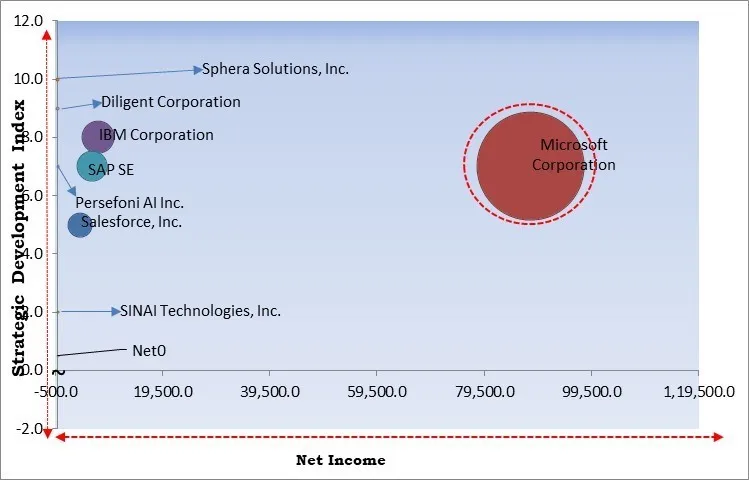
Many companies are prioritizing sustainability as part of their CSR initiatives. Carbon neutrality is a major goal for these companies to enhance their environmental credentials and meet stakeholder expectations. Similarly, Unilever aims to become carbon neutral in its operations by 2030 and is working towards a climate-positive goal by reducing emissions and supporting environmental regeneration. In conclusion, increased regulatory requirements and standards for carbon emissions reporting are driving the market's growth.
Consumers are becoming more aware of environmental issues and are increasingly prioritizing sustainability in their purchasing decisions. Companies demonstrating their commitment to sustainability and environmental responsibility gain a competitive edge in the market. In conclusion, rising consumer demand for environmentally responsible products drives the market's growth.
The upfront costs of purchasing and deploying this software can be substantial. This includes not only the cost of the software itself but also expenses related to installation, customization, and integration with existing systems. This software often requires customization to meet the specific needs of different sectors and organizations. In conclusion, the high implementation costs of this software are impeding the market's growth.
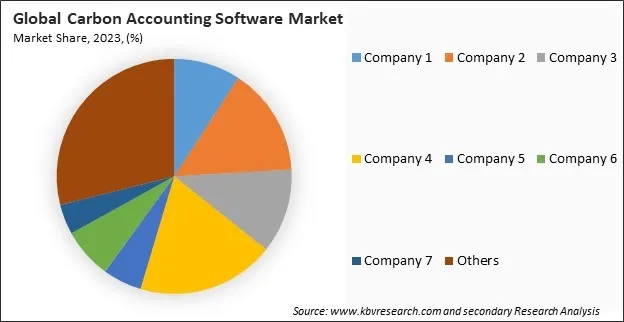
The leading players in the market are competing with diverse innovative offerings to remain competitive in the market. The above illustration shows the percentage of revenue shared by some of the leading companies in the market. The leading players of the market are adopting various strategies in order to cater demand coming from the different industries. The key developmental strategies in the market are Partnerships & Collaborations.


Based on deployment, the market is divided into cloud and on-premises. The on-premises segment held 25% revenue share in the market in 2023. On-premises solutions provide organizations with complete control over their data security. For industries dealing with sensitive or proprietary information, the ability to maintain data within their IT infrastructure can offer a higher level of security and privacy.
On the basis of enterprise size, the market is segmented into large enterprises and SMEs. In 2023, the SMEs segment attained 31% revenue share in the market. SMEs are becoming more aware of their environmental impact and the importance of sustainability. As consumers and business partners emphasize environmental responsibility more, SMEs are motivated to adopt carbon accounting practices to demonstrate their commitment to sustainability.
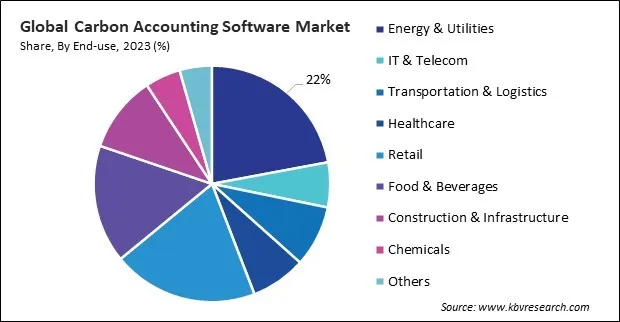
By end-use, the market is divided into energy & utilities, IT & telecom, healthcare, transportation & logistics, retail, construction & infrastructure, food & beverages, chemicals, and others. The food & beverages segment held 16% revenue share in the market in 2023. The food and beverage sector has intricate supply chains that contribute to overall carbon emissions. This software helps manage and track emissions across the supply chain, ensuring comprehensive carbon management.
Free Valuable Insights: Global Carbon Accounting Software Market size to reach USD 74.4 Billion by 2031
Region-wise, the market is analyzed across North America, Europe, Asia Pacific, and LAMEA. The North America region witnessed a 41% revenue share in the market in 2023. The U.S. and Canada have implemented carbon pricing mechanisms, such as carbon taxes and cap-and-trade systems. These policies create a financial incentive for businesses to monitor and reduce their carbon emissions.
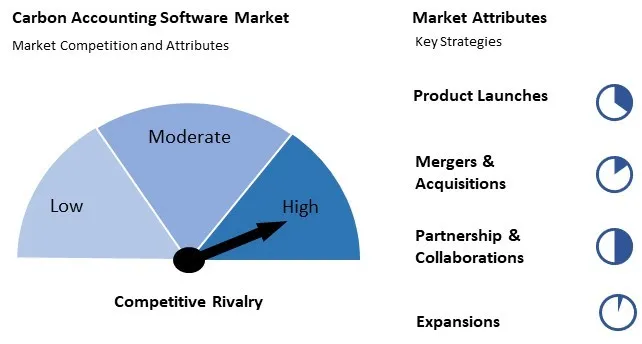
The competition in the Market is rapidly intensifying, driven by growing environmental regulations and corporate sustainability goals. Established software providers focus on expanding features for tracking emissions, while new entrants offer innovative, user-friendly solutions. Strategic partnerships and integration with broader sustainability platforms fuel market rivalry.
| Report Attribute | Details |
|---|---|
| Market size value in 2023 | USD 16.1 Billion |
| Market size forecast in 2031 | USD 74.4 Billion |
| Base Year | 2023 |
| Historical Period | 2020 to 2022 |
| Forecast Period | 2024 to 2031 |
| Revenue Growth Rate | CAGR of 21.8% from 2024 to 2031 |
| Number of Pages | 265 |
| Number of Tables | 394 |
| Report coverage | Market Trends, Revenue Estimation and Forecast, Segmentation Analysis, Regional and Country Breakdown, Competitive Landscape, Market Share Analysis, Porter’s 5 Forces Analysis, Company Profiling, Companies Strategic Developments, SWOT Analysis, Winning Imperatives |
| Segments covered | Deployment, Enterprise Size, End-use, Region |
| Country scope |
|
| Companies Included | IBM Corporation, SAP SE, Salesforce, Inc., Microsoft Corporation, Persefoni AI Inc., Sphera Solutions, Inc., Offspend (Greenly), Diligent Corporation¸SINAI Technologies, Inc. and Net0 |
By Deployment
By Enterprise Size
By End-use
By Geography
This Market size is expected to reach $74.4 billion by 2031.
Increasing carbon emission worldwide are driving the Market in coming years, however, High implementation costs of carbon accounting software restraints the growth of the Market.
IBM Corporation, SAP SE, Salesforce, Inc., Microsoft Corporation, Persefoni AI Inc., Sphera Solutions, Inc., Offspend (Greenly), Diligent Corporation¸SINAI Technologies, Inc. and Net
The expected CAGR of this Market is 21.8% from 2024 to 2031.
The Large Enterprises segment led the Market by Enterprise Size in 2023; thereby, achieving a market value of $49.7 billion by 2031.
The North America segment dominated the Market by Region in 2023, and would continue to be a dominant market till 2031; thereby, achieving a market value of $28.9 billion by 2031.
Our team of dedicated experts can provide you with attractive expansion opportunities for your business.
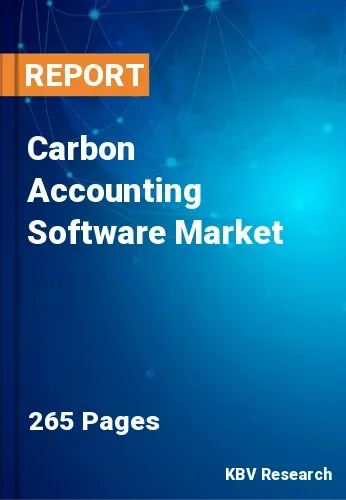
 Drivers
Drivers
 Restraints
Restraints
 Opportunities
Opportunities
 Challenges
Challenges
